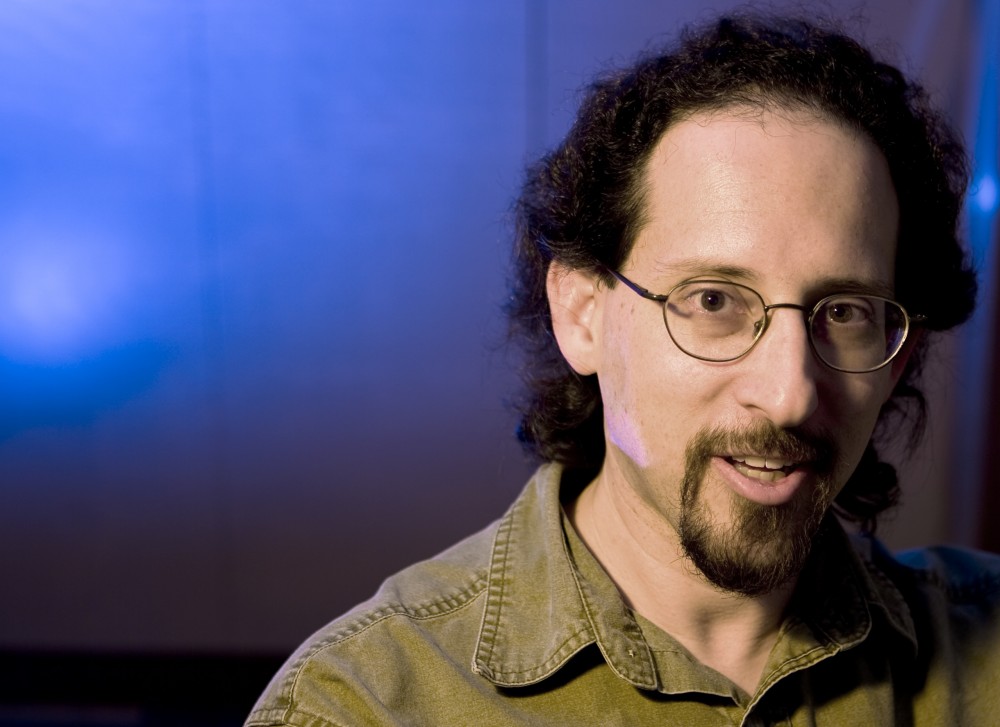A rat with tiny wires âÄî thinner than a strand of hair âÄî surgically implanted in its brain, sits in the middle of a wooden maze and observes its surroundings. The rat is literally plugged into a computer that tracks spikes of electricity given off by neurons in its brain. By reading the spikes, researchers predict what the rat is thinking the instant it thinks. No, this is not a scene from The Matrix , but rather just another day in University of Minnesota Professor David RedishâÄôs exploration of behavioral neuroscience âÄî the study of neural systems that drive behavior. Redish is trying to solve the addiction puzzle that affects millions of people across the country, and heâÄôs doing it with rats and computer models. Reddish said he believes the the brain is basically a decision making machine, and addiction is the machine breaking down. In addicts, the brain repeatedly makes decisions that the person doesnâÄôt want it to make. These unwanted decisions are called failure modes, and all mammals have certain failure modes, Reddish said. Failure modes cause addicts to behave in self-destructive ways, essentially stripping a person of his self control, Reddish said. âÄúAddictive nature and pleasure are not always linked,âÄù he said. âÄúThere are several studies where addicts admit to taking drugs, but deny getting any pleasure from it.âÄù By gathering data about the way mice make decisions, Reddish has constructed 15 failure modes and is in the process of testing them. If doctors could one day effectively test for these failure modes, they could separate their patients according to what failure mode they fall under. They would then know why each of their patients was addicted, which could greatly improve treatment success, Reddish said. The addiction puzzle gets more complicated because most addicts have more than one failure mode, Reddish said. âÄúAddiction is one of the hardest things to treat out of any disease,âÄù Reddish said. âÄúWeâÄôre not done, but weâÄôre in the right ballpark.âÄù Reddish published a paper illustrating his theory last summer, and it was reviewed by researchers nationwide. The reviews were mostly positive, which is good because improving addiction treatment will require many people from many different fields, Redish said. Clinician RedishâÄôs new findings are useful because in the past there has been a disconnect between behavioral neuroscience and addiction treatment, said Paul Pentel, a medicine professor and clinician at Hennepin County Medical Center. âÄúWe have not had the tools or depth of understanding to really go there,âÄù Pentel said. Pentel is trying to develop medications for addiction treatment, and like Redish he works with animal models to look at mechanisms for addiction. While Pentel isnâÄôt formally working with Redish, heâÄôs applying some of RedishâÄôs theory to his own research. âÄúHis model has helped all of us in expanding the way we think about addiction.âÄù Pentel said. The most important lesson from RedishâÄôs work is that because addiction is so complex, it requires a combination of different treatments, Pentel said. Addiction Studies Program Since the beginning, the UniversityâÄôs Addiction Studies Program has focused on incorporating science with therapy, program director Julie Rohovit said. âÄúI always tell the students you are scientists and practitioners and the minute you start shutting out the science you are not going to be as affective in your work,âÄù she said. As more research like RedishâÄôs comes out, it will be easier to combine medicine and traditional therapy, Rohovit said. But with that in mind, there are some things traditional therapy can do that science cannot. âÄúThereâÄôs always going to be room for talk therapy,âÄù she said. âÄúThere are some things you canâÄôt fix through another drug or through medical approaches.âÄù Recovering addict For University researchers, addiction is a topic of study, but for philosophy senior Timothy Koester , itâÄôs a ghost he lives with every day. Koester is a recovering alcoholic and is currently the vice president of Students Off Booze and Enjoying Recovery , a group that serves as a social network for students who donâÄôt drink. He began drinking in middle school, mostly because his friends did, and by the time he reached high school he was having serious alcohol issues. Koester said eventually he couldnâÄôt control his drinking, which got him in trouble with the law and took a toll on his health. âÄúIt was literally killing me; I almost died of alcohol poisoning a number of times,âÄù Koester said. âÄúI didnâÄôt want to die, but I couldnâÄôt stop drinking.âÄù Koester said some aspects of RedishâÄôs findings were consistent with how he felt at the time. But at age 21, when many people begin their drinking experience, Koester sobered up for good. The difference was a willingness to take recovery seriously, and finding spirituality, Koester said. No matter how much treatment or science develops, itâÄôs always going to be up to the individual when it comes to addiction, Koester said. âÄúI donâÄôt think itâÄôs fair to hold [clinicians] responsible for my personal failure,âÄù he said. Now 25 years old, Koester is on his way to graduating in three years and has plans for law school. âÄúI could be in the middle of a bar and not even think about having a drink,âÄù he said.
Professor develops theory about how addicts’ brains work

Image by Paul Bangasser
Tentacle Boy
Published October 16, 2008










